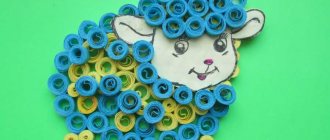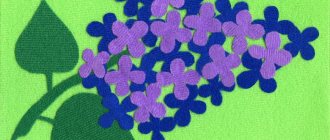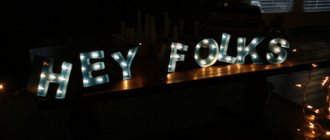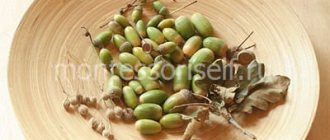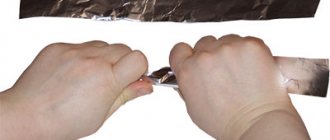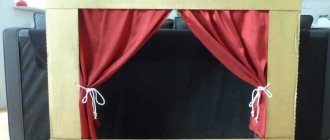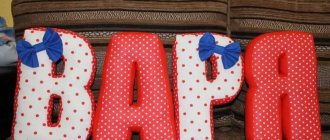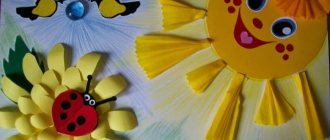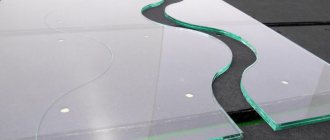To prevent parents from getting bored, it has now become fashionable to assign homework not only at school, but also in kindergarten. It’s already clear to everyone who generates ideas for crafts and comes up with what material the child will create from this time. Every year the tasks become more difficult. And if earlier you needed to make a cute craft on the theme “my beloved parents” or draw your favorite dish, today you very often need to show your imagination. One of the current tasks for today is the “My Favorite Kindergarten” craft. We will consider ideas on this topic today.
Materials
Many crafts are created by the hands of children in kindergarten. Their imagination and creative spark allows them to create their masterpieces from any materials. However, you should always keep in mind that all materials used in children's creativity must be completely safe. This is especially true for children from the nursery group, who are actively getting to know the world and are ready to taste everything.
The best option for younger children is to use natural materials: dried flowers, leaves, acorns, bark, cones and nuts. They make very interesting crafts for kindergarten. They are not only completely safe, but also, due to their texture, stimulate brain development by affecting tactile receptors.
Paper and cardboard are also good for this purpose - they are completely non-toxic and safe to swallow.
The “black list” of materials for kindergarten creativity should include beads, small buttons and seed beads. Even under the supervision of a teacher, a baby can swallow, inhale, or put such small objects into his nose. The use of instant glue should also be completely prohibited, even under the supervision of adults.
Often in kindergartens plasticine is used to create figures. Unfortunately, it has several significant disadvantages: it melts at high temperatures, figures made from it actively attract dust and are practically not wiped clean.
And its main disadvantage is its unnatural composition - small children can get poisoned by trying a bright bar on their teeth. An excellent alternative to plasticine is salted play dough.
Soft Book Ideas
Layout ideas:
- Color spectrum. Children are introduced to flowers from an early age. Memorizing colors in a playful way is much easier. This idea can be implemented in a book. For example, create a rainbow from strips secured with Velcro. Choose a color analogue from geometric shapes for each strip.
- Study of simple geometric shapes. You can create a panel on which the child will add the missing geometric figures, securing them with Velcro, attaching them to a button or to a button. At the same time, fine motor skills are developed. And the child will quickly remember the shape of objects in a playful way. The book can be complicated by taking objects of the same shape, but of different sizes. The baby will show
- Memorizing vegetables and fruits. To do this, you can make mock-ups of fruits from fabric or use ready-made dummies. You can create an impromptu garden - collect apples from a tree in a basket or hang cherries on a tree, arrange bunches of grapes on a vine, harvest cucumbers or tomatoes. To secure the elements, you can use the above methods or make special slot pockets.
- Study of animals and birds. An interesting option would be to create houses for animals. For each animal, you can offer to select a baby and name it. For example, a fox is a fox cub, a cow is a calf.
- Introduction to the basics of counting. In this case, there can be a huge number of options for presenting the material. These are abacus with knuckles of different shapes, flower petals with numbers. In the photo of a handmade book, you can see a variety of ways to design pages.
- Learning letters. To study the alphabet, you can make pockets with images of objects starting with the corresponding letter. An interesting option is one letter, one page. Pictures with the names of objects starting with that letter are placed in the pocket with the corresponding letter. With the help of soft figures you can make words or sentences.
- Books-plots. For example, a book based on a fairy tale or cartoon. Fairy-tale characters perform certain actions. Figures can have movable elements. For example, a soft folding book based on the fairy tale “Turnip” is suitable for children. The fairy tale characters are covered with Velcro covers. The child tells a fairy tale and reveals the corresponding hero. You can play out any plot in the same way.
- Junior schoolchildren from kindergarten know how to make a children's book with their own hands. Therefore, they are interested in combined options - a combination of cardboard, ready-made albums and textile filling. At this age, the topics of books change. For example, you can create an album about animals, fish or birds, climate zones or plants.
Pictures and drawing templates can be found on thematic websites, in coloring books, or translated using tracing paper from books.
Children value the creative process and collaboration with their parents. Whatever the topic is chosen, the main thing is to make the book bright, colorful, interesting and useful.
Papier mache
Using this technique requires perseverance, so it is suitable for older children.
For papier-mâché, it is better to use newspapers and PVA glue. The base of the craft can be made from a plastic bottle, an unnecessary small rubber ball or a foam blank.
The main thing is to apply no more than two layers of paper and glue, and then let them dry thoroughly. After the craft has completely dried, it can be painted and decorated.
Symbols of your hometown - an original craft
Every city in our country has something special and unique. Think about what your native land is famous for? Perhaps this is some kind of production, special painting techniques or another type of art. Some special architectural structures can also be considered as symbols of the city: monuments, the Kremlin or an ancient cathedral. When making crafts for City Day, you can include similar symbols in your work. You can make a drawing postcard on the theme “What is my region famous for” and add a congratulatory inscription, or beautifully design a mini-composition.
Walnut figurines
You can make cute ladybugs from walnut shells - just paint the halves with gouache.
You can also make turtles from the shell by making the legs, head and tail from plasticine.
Acorns
When making crafts from acorns, toothpicks are most often used to securely connect the parts and plasticine for decoration.
You can make a cute horse out of two acorns and matches - just connect the acorns with a match so that they resemble the head and body of the animal. Four more matches will depict the horse's legs. Eyes, ears and tail can be made from salt dough.
Using the same principle, you can make a figurine of a man in a beret.
snow wool
Cotton pads are found in every home, and if you have a small child, it is better to have a supply of this wonderful material for creativity. They are safe, easy to work with, they are glued with regular PVA glue, you can leave them white or paint them with watercolors.
The first thing that comes to mind when you look at the white fluffy circle is a snowman. Complete it with an orange nose and a bright bucket cut out of colored paper, draw eyes, twig handles or a broom with a felt-tip pen - and an excellent DIY winter craft for kindergarten is ready.
You can complicate the task and add a winter landscape to the picture - halves of the disks will depict snowdrifts, and whole disks glued to the drawn trunk will represent trees under caps of snow.
Feeders
Children can easily be taught to make bird feeders from plastic containers. Such crafts in the kindergarten areas will attract many birds and help them survive the winter cold.
To make a feeder, just cut a window in the side of the bottle into which the birds will climb to enjoy the treat. It is best to attach the feeder to a tree with wire or hang it on a thick jute rope.
Making a Floral Card
Before starting work, you should prepare a sheet of thick cardboard, colored paper, glue and scissors. Next you need to follow the step-by-step instructions:
- Choose a template for any flower you like: tulip, original rose, lush peony.
- Using the template, outline the main details: bud, leaves and stem.
- Fold a sheet of cardboard in half to make a simple postcard model.
- Paint the outside of the card with watercolors and let the paint dry.
- Glue the flower details onto the title page.
If the child wishes, you can decorate the card with additional icons or symbols, beads or rhinestones. Parents can help make a congratulatory inscription.
Light plasticine
Relatively recently, parents and children became acquainted with such a creative material as lightweight plasticine. It has bright colors, is very flexible, and does not stain clothes or surfaces.
And its most important advantage is that it freezes perfectly in the air and the figures retain their shape forever. Such toys can be kept as souvenirs, used to make refrigerator magnets, or create Christmas decorations.
An example of making a book page with an invoice
It is better to make a book that is useful and interesting for a child in your free time, paying attention to preparing for the upcoming creative process. To do this, you will need soft felt and a corresponding template for the page, Velcro and scissors; the invoice theme is implemented in the design of the seabed:
- To make a page blank, one sheet of thin foam rubber is used, felt of the corresponding color is sewn to it on both sides;
- the resulting blank (60x30 cm) is divided in half and outlines are made; in this place the sheet will be sewn together with the main book;
- you can decorate the seabed with pebbles and seaweed (cut from felt or formed from woolen threads of different colors);
- the main elements of the page will be the inhabitants of the underwater bottom, they are the ones used for the baby to master quantitative calculation;
- The interesting page can be filled with starfish and dolphins, goldfish and starfish; they are cut out of soft felt;
- to make voluminous sea creatures, you can use a specific template and material of different colors or shades;
- To fill the toys, you can use standard fillers or take cereals (buckwheat, rice or millet, seeds) which will give them texture;
- Velcro sewn to them will help ensure a good level of fixation of toys on the improvised and pre-decorated seabed.
The finished page is sewn into a book or used as a separate book to master quantitative skills. Over time, this page can be supplemented with numbers and signs (plus and minus, multiplication and division, equals), mastering the basic basics of mathematics.
To make a book it is easy to use a master class and it is important to decide on its subject and materials, select sketches and choose the right size. The pages attached to plastic rings will become the child’s first teachers, but for the baby’s full development, you should play with him using the book as an exciting teaching aid.
